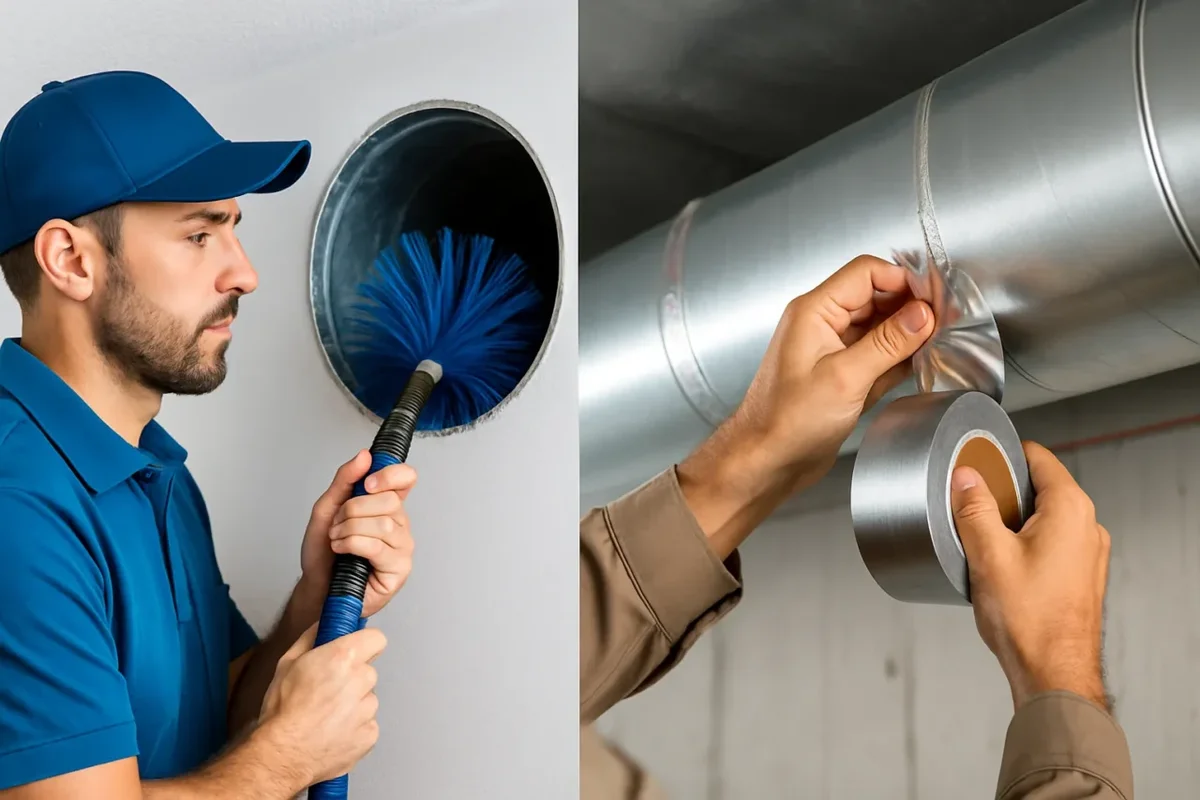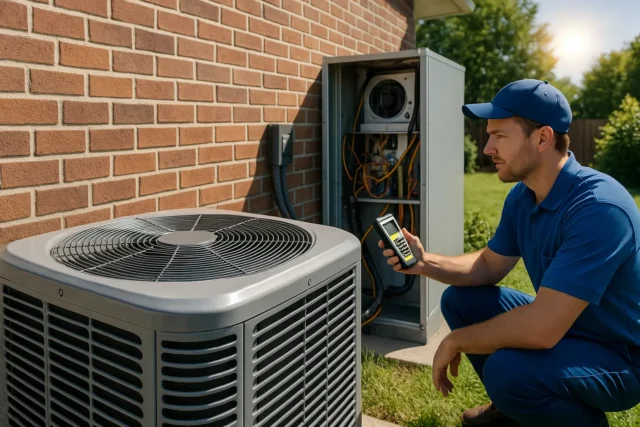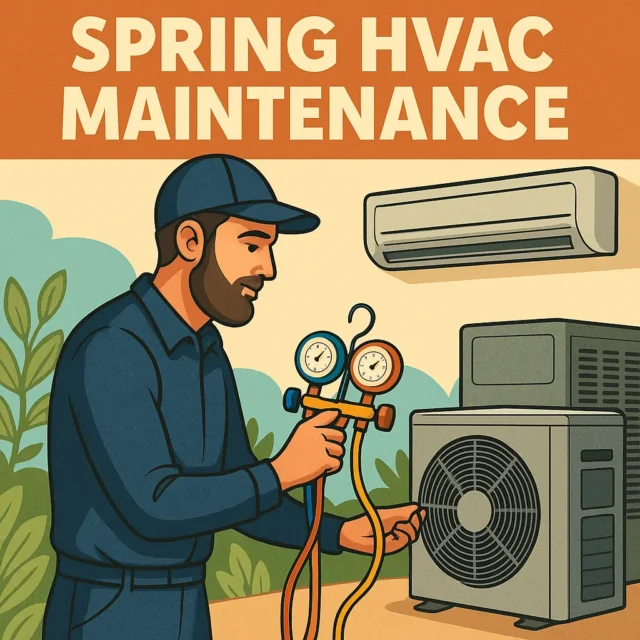Air Duct Cleaning vs Sealing: Which Service Truly Matters?

When it comes to keeping your home comfortable and your HVAC system efficient, the condition of your ductwork plays a huge role. Many homeowners wonder what makes more sense: air duct cleaning vs sealing. While both services target different issues inside your HVAC system, they share the same goal—better airflow, healthier indoor air, and improved energy efficiency.
In this guide, we’ll break down the differences, explain when you need each service, and highlight why paying attention to your ductwork is one of the smartest moves for your home’s comfort and budget.
What Is Air Duct Cleaning?
Air duct cleaning is the process of removing dust, dirt, mold, allergens, and debris from the ductwork that runs through your home. Over time, ducts collect particles that reduce air quality and make your HVAC system work harder than it should.
Benefits of Air Duct Cleaning
Healthier indoor air – Removing allergens and dust helps reduce sneezing, asthma triggers, and respiratory irritation.
Better airflow – Clean ducts improve circulation, ensuring every room receives the right amount of heated or cooled air.
Energy savings – With less buildup blocking airflow, your HVAC system uses less energy.
Less wear on equipment – Clean ducts prevent dirt from moving into HVAC components like coils and blowers, extending equipment lifespan.
If you want a deep look at professional cleaning, check our air duct cleaning services.
What Is Air Duct Sealing?
While cleaning focuses on removing dirt inside ducts, sealing addresses leaks and cracks in the duct system itself. If your ducts are leaking, conditioned air escapes before it reaches your living space. This not only wastes energy but also creates uneven temperatures in your home.
Benefits of Duct Sealing
Energy efficiency – Sealed ducts stop cooled or heated air from escaping, lowering utility bills.
Consistent comfort – No more hot or cold spots in certain rooms; sealed ducts balance airflow throughout your home.
Better air quality – Leaky ducts can pull in dust, insulation particles, or even outdoor pollutants. Sealing prevents that.
Longer system life – By reducing stress on your HVAC unit, sealing helps avoid premature breakdowns.
For more details, explore our duct sealing services.
Air Duct Cleaning vs Sealing: The Key Differences
Even though both services improve efficiency and comfort, they tackle different problems:
Cleaning targets dust, debris, and allergens inside the ducts.
Sealing fixes leaks and gaps to keep conditioned air inside.
Think of it this way: cleaning is about hygiene and airflow quality, while sealing is about energy efficiency and system performance.
If your ducts are dusty but intact, cleaning is the better choice.
If you notice uneven temperatures, high energy bills, or weak airflow, sealing is usually the solution.
When Do You Need Air Duct Cleaning?
Consider scheduling duct cleaning if:
You see visible dust or mold near vents.
Family members suffer from allergies that get worse indoors.
You notice musty odors when the HVAC runs.
It’s been more than 3–5 years since the last cleaning.
When Do You Need Air Duct Sealing?
You may need sealing if:
Utility bills are climbing despite normal HVAC usage.
Some rooms are always warmer or cooler than others.
You hear whistling noises in your ductwork.
HVAC runs longer than usual but doesn’t heat or cool effectively.
Why Air Handlers Depend on Healthy Ducts
Your air handler is the heart of your HVAC system, pushing conditioned air through ducts. Even if your air handler works perfectly, dirty or leaky ducts can ruin performance.
With unsealed ducts, the air handler works harder, increasing wear and tear.
With clogged ducts, the blower fan faces resistance, reducing efficiency.
Combining sealing and cleaning allows your air handler to deliver maximum comfort.
This connection shows why both services are valuable—but if you must choose, sealing often delivers a stronger long-term payoff.
Cost Comparison: Cleaning vs Sealing
Air duct cleaning usually costs less upfront, but the benefits are shorter-term. Most professionals recommend cleaning every 3–5 years.
Duct sealing costs more initially but pays for itself by reducing wasted energy and lowering monthly bills. Once sealed properly, ducts rarely need resealing for years.
Which Service Adds More Value?
If your ducts are filthy, cleaning is an immediate win for health and comfort. But for long-term efficiency and lower bills, sealing provides more measurable savings.
For many homeowners, the best approach is combining both: clean first to remove contaminants, then seal to keep ducts efficient. This ensures your air handler works with minimal strain.
Common Misconceptions About Cleaning and Sealing
“Cleaning alone will fix airflow issues.” Not true. If ducts leak, airflow problems will remain.
“Sealing means I’ll never need cleaning.” Wrong. Dust and debris can still accumulate inside sealed ducts.
“These services are optional.” In reality, ignoring duct issues leads to higher bills, unhealthy air, and unnecessary system repairs.
Making the Right Decision for Your Home
Choosing between air duct cleaning vs sealing comes down to your home’s current needs:
If you suffer from allergies or notice visible dust, cleaning is the first step.
If you’re frustrated by high bills or uneven heating/cooling, sealing is the smarter choice.
For the best results, combine both for a cleaner, healthier, and more efficient home.
Conclusion
Your HVAC system works best when air ducts are both clean and sealed. Cleaning improves indoor air quality and reduces allergens, while sealing keeps conditioned air inside and lowers energy waste. Together, they ensure your air handler operates efficiently and your family enjoys consistent comfort.
If you want professional help deciding the best option for your home, trust the team at A Customer First AC to guide you. With expert air duct cleaning and duct sealing services, you’ll notice fresher air, lower bills, and a system that lasts longer.


